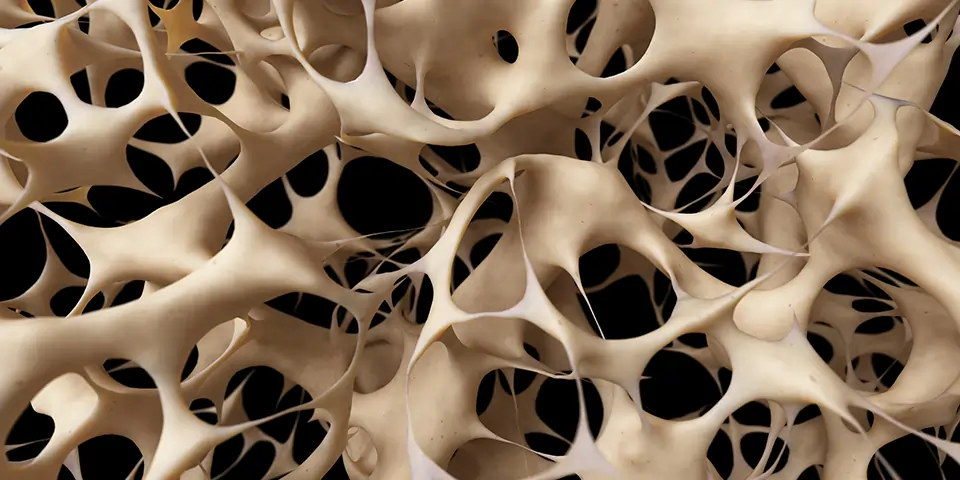Osteoporosis: Understanding the Silent Disease and How to Manage It
Osteoporosis is a disease that weakens bones and increases the risk of fractures. It is often referred to as the “silent disease” because it progresses slowly and without symptoms until a fracture occurs. However, there are steps that can be taken to manage osteoporosis and prevent fractures.

Understanding Osteoporosis
Osteoporosis is a disease that occurs when bones lose mass and density, becoming weaker and more fragile. It is more common in women, especially after menopause, but can affect men as well. It can lead to fractures in the hip, spine, and wrist, and can have a significant impact on a person’s quality of life.
Risk Factors for Osteoporosis
Several factors can increase the risk of developing osteoporosis, including:
- Age: Bone density naturally decreases as we age, making us more susceptible to the disease.
- Gender: Women are at a higher risk of the disease due to the loss of estrogen during menopause.
- Family history: A family history of osteoporosis increases the risk of developing the disease.
- Medications: Long-term use of certain medications, such as corticosteroids, can contribute to this disease.
- Lifestyle factors: Poor nutrition, lack of physical activity, and smoking can contribute to this disease.
Managing Osteoporosis
There are several steps that can be taken to manage osteoporosis and reduce the risk of fractures, including:
- A healthy diet: A diet rich in calcium, vitamin D, and other nutrients is essential for maintaining strong and healthy bones.
- Regular exercise: Weight-bearing exercise helps stimulate the growth of new bone tissue and can help prevent bone loss.
- Medications: Several medications, including bisphosphonates, denosumab, and teriparatide, can be used to treat the disease and reduce the risk of fractures.
- Fall prevention: Taking steps to prevent falls, such as removing hazards from the home and using assistive devices, can help reduce the risk of fractures.
- Regular check-ups: Regular check-ups with a healthcare provider can help detect and treat it and monitor the effectiveness of treatment.
How to Prevent Osteoporosis
Osteoporosis is a condition in which the bones become weak and brittle due to a loss of bone density. It is more common in women after menopause, but men can also develop the condition. The following are some steps that can be taken to prevent the disease:
- Get enough calcium (1) and vitamin D: Calcium is an essential mineral that is necessary for strong bones. Vitamin D helps your body absorb calcium. Good sources of calcium include dairy products, leafy green vegetables, and fortified foods. Vitamin D can be obtained from sunlight, supplements, and certain foods like fatty fish.
- Exercise regularly: Weight-bearing exercises, such as walking, running, dancing, and weightlifting, can help to build and maintain bone density. Aim for at least 30 minutes of exercise most days of the week.
- Don’t smoke: Smoking has been linked to decreased bone density and increased risk of fractures.
- Limit alcohol consumption: Excessive alcohol consumption can increase the risk of the disease.
- Consider hormone replacement therapy: Women who have gone through menopause may benefit from hormone replacement therapy (HRT) to help prevent bone loss. However, HRT may have other risks and should be discussed with a healthcare provider.
- Get regular bone density screenings: Women over age 65 and men over age 70 should get a bone density test to screen for the disease. Other factors, such as a family history of osteoporosis or certain medical conditions, may also warrant earlier screening.
By following these steps, you can reduce your risk of developing osteoporosis and help keep your bones healthy and strong.
Conclusion
Osteoporosis is a silent disease that can have a significant impact on a person’s quality of life. However, there are steps that can be taken to manage it and reduce the risk of fractures. A healthy diet, regular exercise, medications, fall prevention, and regular check-ups with a healthcare provider are all important for managing the disease and maintaining strong and healthy bones. By taking action to manage osteoporosis, individuals can reduce their risk of fractures and maintain their independence as they age.



